

Wine Making Ingredients Glossary The simple answer is that they make the wine making process easier and more fool proof. Back in the day they did not have all of the conveniences that science has provided and a lot of what they did produced unreliable results. The seemingly same process could give you a delicious wine... or it could give you vinegar. I am not saying that I can not The stuff in the list to follow are items that you might see in the recipes for your home made wine. I just think that it is better to know why you are adding something to your wine if you know what it is supposed to be doing.

Acid BlendYou will see a lot of reference to acids when it comes to wine making ingredients. You will sometimes be asked to test the acid levels and add acid or reduce acid depending on the test results.Acid helps to preserve your wine. Acid blend is a combination of citric, malic and tartaric acid and is usually just labeled "acid blend". You can also add these acids individually if you choose. If you see the acids listed individually feel free to substitute acid blend. You can also use the juice from one lemon in place of 1 tsp of acid blend. The lemon will obviously also add a bit of its own flavor to your wine. But a lemon will work if you do not have any acid blend available.
Bentonite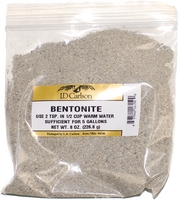 This is a clay-based clarifier that absorbs colloidal substances. This will normally be added prior to fermentation, but sometimes it is added during secondary fermentation. This is a clay-based clarifier that absorbs colloidal substances. This will normally be added prior to fermentation, but sometimes it is added during secondary fermentation.
Diammonium Phosphate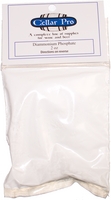 Diammonium Phosphate stimulates yeast growth, and is a useful addition to yeast starters and wines lacking in natural nutrients, such as white wines and meads. Diammonium Phosphate stimulates yeast growth, and is a useful addition to yeast starters and wines lacking in natural nutrients, such as white wines and meads. Some winemakers add it to every fermentation. Use 1/2 to 3/4 gram per gallon.
Gelatin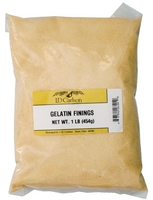 This is a colorless, tasteless and odorless water-soluble protein. This is a fining agent that also reduces astringency by removing tannin. This is a colorless, tasteless and odorless water-soluble protein. This is a fining agent that also reduces astringency by removing tannin. This does not work very well in white wines without the addition of tannin. You would use two teaspoons dissolved in 1 cup of water. Stir until clear then stir into your wine.
NutrientsThe next item in your list of wine making ingredients is Nutrients.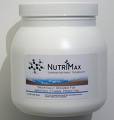   Nutrients are... hmmm... I guess they are like vitamins for your yeast. The yeast eats your sugar and turns it into alcohol. Well, the nutrients rev up the yeast... makes it very happy... Yeast Nutrient supplies nitrogen to the yeast which allows the yeast to reproduce more readily. This makes your fermentation process go a lot smoother.
Yeast EnergizerA cousin to the yeast nutrient on the wine making ingredients list would be Yeast Enertizer. 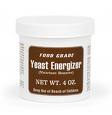 Like Yeast Nutrient, the Energizer supplies the wine yeast with much needed nitrogen... but it also contains over a dozen yeast extractive proteins, along with B1 Vitamin, and di-ammonium phosphate. These are other sources of nitrogen. You would use the Energizer when you are making wines such as meads or wines using vegetables, herbs, flowers, etc...
Pectic EnzymeAnother addition to the wine making ingredients list are Pectic Enzymes... 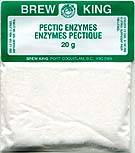 they are used to eat the pectin that is present in some fruits. For those of you who are jam or jelly makers you will be familiar with pectin. You definitely do not want a thick wine...yuck! You will normally add 1 tsp of the pectic enzyme to your wine mixture and then wait for 24 hours to give it a chance to eat all of the pectin. If you are unsure if you need to use this... then use it. Better safe than sorry and it will only help things.
Potassium Metabisulfite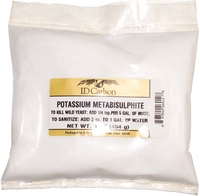 Potassium metabisulfite is one of the most important winemaking compounds. It is an antioxidant and bactericide that releases sulfur dioxide into wine must. Potassium metabisulfite is one of the most important winemaking compounds. It is an antioxidant and bactericide that releases sulfur dioxide into wine must. Use 1/4 teaspoon per five gallons to add 50 ppm. Or, mix 1/4 pound in 1 quart of water to make a stock solution; 1 teaspoon of stock solution in one gallon of must yields 50 ppm sulfur dioxide.
Sodium Metabisulfite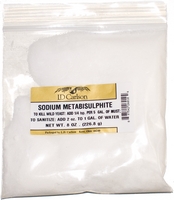 This is an antioxidant and bactericide. You would use 1/4 teaspoon per five gallons to add 50 ppm. This is an antioxidant and bactericide. You would use 1/4 teaspoon per five gallons to add 50 ppm. Or, mix 1/4 pound in 1 quart of water to make a stock solution; 1 teaspoon of stock solution in one gallon of must yields 50 ppm. This is less expensive than Potassium Metabisulfite, but contains the sodium ion, which some winemakers would prefer to avoid.
StabilizerA stabilizer - or Potassium Sorbate -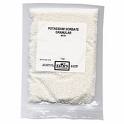 is the next item on the wine making ingreidents list... it is used to stop the yeast from growing once you have the alcohol content that you want. You will usually add this to your wine when you are ready to sweeten it before you bottle. The stabilizer makes sure that the wine does not start fermenting again after you add the sugar. is the next item on the wine making ingreidents list... it is used to stop the yeast from growing once you have the alcohol content that you want. You will usually add this to your wine when you are ready to sweeten it before you bottle. The stabilizer makes sure that the wine does not start fermenting again after you add the sugar.You will normally add 1/2 tsp per gallon. I have heard that it can develop an off taste if you use it in wine that you keep for a long time. I usually drink my wine pretty quick. Not that I am saying I am a lush or anything... I just make smaller batches and do not keep them longer than I have to...
SulfiteThis next item in the wine making ingredients list would be better known in recipes as Campden tablets. Now... be aware that some people are sensitive to sulfites... it upsets their stomachs. I have never had a problem but some people do. Now... be aware that some people are sensitive to sulfites... it upsets their stomachs. I have never had a problem but some people do. The Campden tablets help to purify your wine before adding your yeast. You will then cover your primary fermenter and wait for 24 hours for it to finish its job. Then you will add your yeast. You can also add 1 crushed Campden tablet per gallon if you want to before you bottle. You can also add 13 crushed Campden tablet to 1 pint of water and use it to rinse out your bottles which helps to keep them sanitized before you fill them. If you make larger amounts of wine you might use commercial brands of sanitizers. You can check with your local wine making store for what they carry.
TanninNext up on the wine ingredients list is... Tannins. Tannins are what make your tongue feel dry when you drink a red wine. I don't particularly care for too much of this. This could be why I prefer white wines. But it is a necessary ingredient for red wines. It does help to clear your wine. Tannins are what make your tongue feel dry when you drink a red wine. I don't particularly care for too much of this. This could be why I prefer white wines. But it is a necessary ingredient for red wines. It does help to clear your wine. You will usually add 1/4 tsp per gallon. But remember that some fruits will already have their own tannins. It is found in the skins of grapes and elderberries.... as well as some other berries. They used to use strong tea in the place of tannin. So if you don't have any tannin you could add 1/2 cup per gallon in a pinch.
Yeast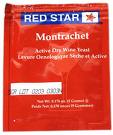 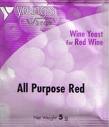 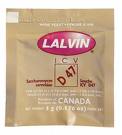 What can I say about yeast? It is the reason for wine being wine... and so I guess it would be the single most important addition to the wine making ingredients list... What can I say about yeast? It is the reason for wine being wine... and so I guess it would be the single most important addition to the wine making ingredients list...It is actually a living thing... that eats sugar... and hopefully reproduces and creates a colony that will continue to eat your sugar creating alcohol. Yeast works best between 60 and 80 degrees. If it is too hot the yeast will die... if it is cold the yeast will ssslllooowwww down. The little packets of yeast that you add will typically be multiplied up to 100 to 200 times during the few days of primary fermentation. It is very important that the yeast has access to air during this process so you will notice in the recipes that you do not put your air lock on at this stage... You really do want to make sure that you are using wine yeast. I know that some people do use or have used bread yeast or beer yeast but it really is not made for wine and you will quite often end up with off tasting wine. Sherry Flor yeast This is an area that you will want to experiment with and keep good notes... different yeasts will work better in certain wines... some will add a taste to the wine and some won't... so you will want to figure out what you like personally. Experimentation is the key to wine making! Feel free to experiment with any of the items on the wine making ingredients list. What works for one person doesn't for another. I like to think that home made wine recipes are simply guidelines... Return to Top of Wine Making Ingredients
|




















 Wine making ingredients can be confusing. Why do you need that stuff?
Wine making ingredients can be confusing. Why do you need that stuff? 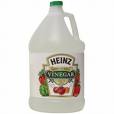 follow a recipe and get wine or vinegar from the same process... because I can... I am just good that way... but the wine making ingredients that we have available to us today sure do make the process easier and more fool proof.
follow a recipe and get wine or vinegar from the same process... because I can... I am just good that way... but the wine making ingredients that we have available to us today sure do make the process easier and more fool proof.

 The sediment at the bottom of your wine when you rack it is actually dead yeast mixed with bits of fruit and other stuff that my have been in your wine. Kind of gross if you think about it too much...
The sediment at the bottom of your wine when you rack it is actually dead yeast mixed with bits of fruit and other stuff that my have been in your wine. Kind of gross if you think about it too much...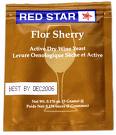 is used for higher alcohol content wines, and champagne yeasts are usually used for white wines and Granular Montrachet yeasts
is used for higher alcohol content wines, and champagne yeasts are usually used for white wines and Granular Montrachet yeasts 